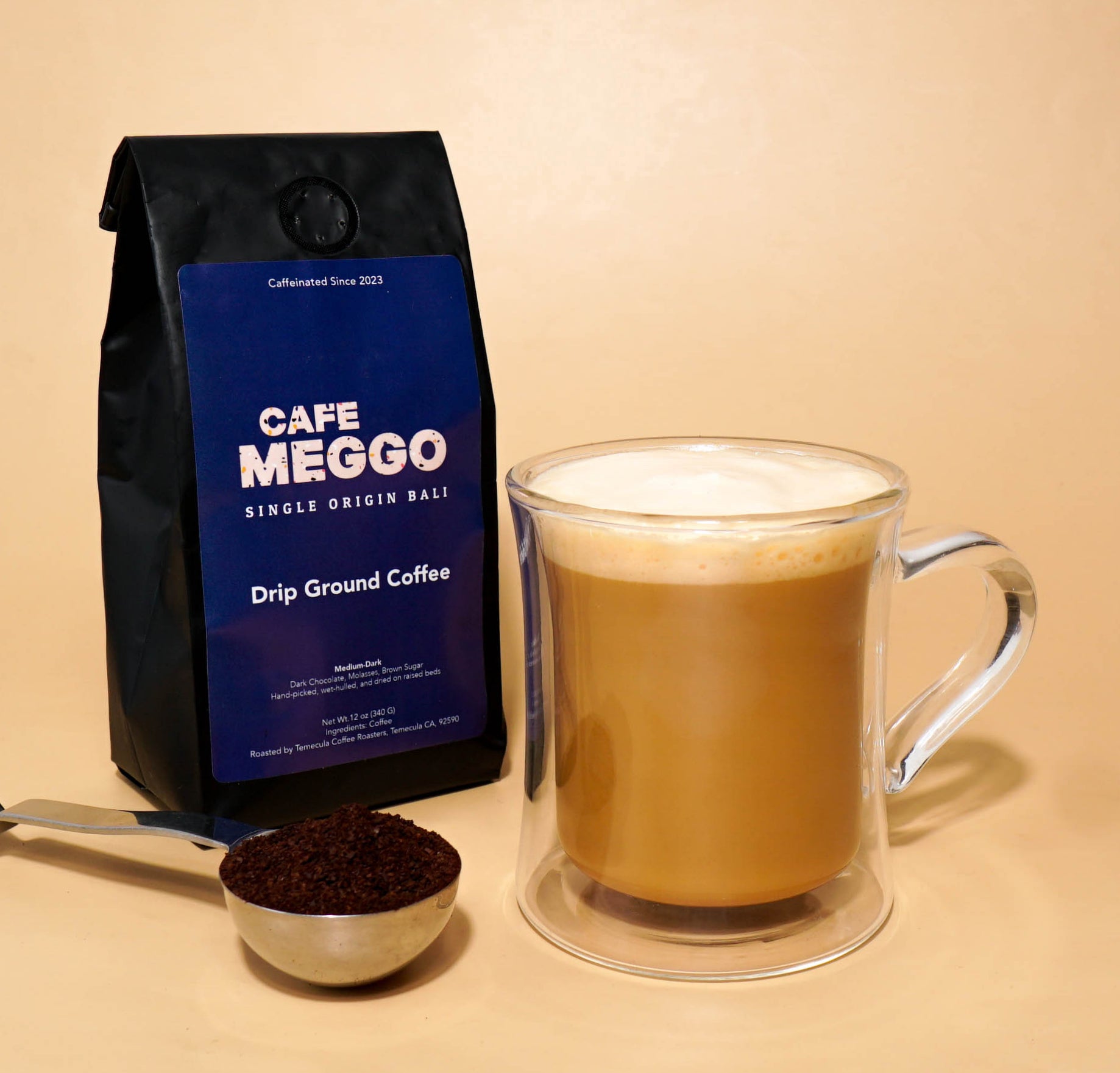Why Brew Lovers Prefer SOE Single Origin Espresso for Purity
Wiki Article
Coffee Beans Uncovered: Discovering the Secrets of Espresso and Blended Coffee Beans
When you consider coffee, what enters your mind? Is it the rich aroma of espresso or the complexity of a well-crafted blend? Understanding the subtleties of coffee beans can change your experience. Each range, from Arabica to Robusta, holds its own tricks. As you check out better, you'll discover exactly how these beans shape tastes and influence sustainability. What might you find concerning your following cup?The Origins of Coffee: A Historic Viewpoint
Although coffee is currently a staple in coffee society worldwide, its origins trace back to the early 20th century in Italy. In 1901, Luigi Bezzera patented the very first coffee maker, intending to brew coffee faster than standard techniques.Comprehending Espresso Beans: Ranges and Features
When you consider espresso, it's important to identify the different bean ranges and their distinct tastes. Each type brings an unique personality to your cup, affected by factors like roast degrees. Understanding these elements can boost your espresso experience significantly.Espresso Bean Varieties
As you check out the world of espresso, you'll quickly uncover that not all beans are developed equivalent; each selection brings its own one-of-a-kind tastes and attributes to your mug. The most prominent kinds consist of Arabica and Robusta. Arabica beans are known for their smooth, nuanced tastes and lower high levels of caffeine content, making them a favored among coffee connoisseurs. On the other hand, Robusta beans load a stronger punch with greater caffeine and a more bitter taste, frequently favored in blends for their crema-enhancing qualities. You may likewise encounter specialty beans like Liberica and Excelsa, which use distinctive profiles and are less common. Each selection supplies something various, so trying out will assist you discover your best coffee.Flavor Accounts Discussed
Comprehending the flavor profiles of different espresso beans can elevate your coffee experience. Each bean range uses unique qualities that affect preference, fragrance, and mouthfeel. For circumstances, Arabica beans commonly present a sweeter, more complicated flavor with hints of fruit and floral notes, while Robusta beans have a tendency to be bolder, with earthy and nutty undertones.When you explore single-origin beans, you could find unique regional flavors-- Main American beans might be bright and citrusy, whereas Italian blends often supply abundant, chocolatey notes.
Roast Degrees Effect
Roast degrees play a crucial role in forming the flavor and fragrance of coffee beans, affecting your general coffee experience. Understanding these roast levels aids you pick the coffee that fits your preference preferences. Trying out with various roasts can lead to wonderful explorations, enhancing your admiration for espresso.The Art of Blending: What Makes Blended Coffee Unique
What makes combined coffee so interesting? It's everything about the art of integrating beans from various origins, roast degrees, and taste accounts. When you blend, you're not simply blending; you're producing a harmonious balance that highlights the staminas of each bean. You can experiment with various combinations to enhance sweetness, body, and acidity, resulting in a brew that's richer and much more complicated than a single-origin coffee.Mixing additionally permits you to accommodate diverse preference choices. You can craft a blend that's mellow and smooth or one that's bold and robust, depending on your target market. Plus, blending can help maintain uniformity, supplying a trusted flavor experience despite seasonal variations in beans. So, whether you're a barista or a home brewer, grasping the art of mixing opens a globe of creativity and flavor possibilities, making your coffee experience truly one-of-a-kind - SOE.
Taste Profiles: Sampling Notes of Coffee vs. Blended Coffee
Combined coffee supplies a world of flavor opportunities, but when it comes to coffee, you're considering a more focused experience. Coffee normally showcases bold, rich flavors with a thicker mouthfeel. You may discover notes of dark delicious chocolate, caramel, and even hints of fruit, depending on the beans. The intensity can be both satisfying and rejuvenating.On the other hand, mixed coffee offers a complex tapestry of flavors. You can explore a selection of tasting notes, from nutty and pleasant to floral and fruity. Each mix can provide something one-of-a-kind, usually incorporating beans from various areas to develop a balanced profile.
While coffee provides a punch, mixed coffee invites you to appreciate the nuances. Whether you prefer the robust strength of espresso or the complex flavors of blended coffee, each mug informs its very own story, waiting for you to discover.
Developing Techniques: Improving Your Coffee Shot
To achieve the ideal espresso shot, understanding the developing techniques is vital, as also small adjustments can considerably affect the taste and quality. Begin by utilizing fresh, high-quality coffee beans; grind them right before brewing for optimum taste. Goal for a great work, concerning the uniformity of common salt, to assure excellent extraction.Next, pay attention to your water temperature; it must be in between 195 ° F to 205 ° F. Too warm or as well cool can wreck your shot. Use about 18-20 grams of coffee for a double shot, and tamp it evenly with firm pressure to create a consistent puck.
A longer extraction can lead to anger, while as well short can result in sour tastes. Practice these methods consistently, and you'll improve your abilities, accomplishing that rich, robust coffee shot you yearn for.
The Function of Roast Degrees in Espresso and Blended Coffee
After understanding the developing methods for espresso, it's time to ponder just how roast degrees affect the taste account of your coffee. The roast degree can dramatically change your espresso's body, aroma, and taste. Light roasts often tend to highlight the coffee's beginning, offering intense level of acidity and fruity notes, while tool roasts balance acidity and sweet taste, developing a well-shaped taste. Dark roasts, on the other hand, bring out vibrant, rich tastes with lower level of acidity, usually generating chocolate or great smoky undertones.
Exploring Sustainability: Ethical Sourcing of Coffee Beans
When you choose coffee, you're not just picking a taste; you're deciding about the effect on farmers and the environment. Understanding Fair Trade methods, chemical-free farming methods, and certification requirements can help you sustain sustainable coffee sourcing. Allow's explore exactly how these elements add to a much more honest coffee experience.Fair Profession Practices
Fair Trade techniques play a crucial role in making sure that coffee beans are sourced fairly and sustainably. When you choose Fair Trade coffee, you support farmers who get fair salaries and job in risk-free problems. This commitment to ethical sourcing aids fight hardship and promotes area advancement in coffee-growing areas. You'll find that Fair Trade accreditation likewise urges eco-friendly farming methods, as manufacturers are incentivized to protect their land and sources. By choosing Fair Trade brands, you're not simply appreciating a rich mug of coffee; you're making a favorable influence on the lives of those who expand it. Your option matters, and it connects you to a global movement concentrated on fairness and sustainability in the coffee market.Chemical-free Farming Approaches
As you explore the globe of honest coffee sourcing, organic farming methods become a crucial element of sustainability. By picking natural coffee, you sustain techniques that focus on dirt health and wellness, biodiversity, and natural communities. Farmers avoid artificial chemicals and plant foods, counting rather on natural garden compost and plant turning to boost dirt fertility. This not just safeguards the environment however also improves the quality of the coffee you take pleasure in. Natural farming urges local wild animals and advertises a well balanced community, lowering the opportunities of condition and parasites. In addition, it commonly causes more powerful, much healthier coffee plants, resulting in richer tastes in your cup. You're making an aware choice that benefits both the earth and your taste. when you opt for organic coffee.Accreditation Standards Explained
Recognizing accreditation requirements is crucial for anyone interested in fairly sourced coffee. These criteria, such as Fair Trade, Rainforest Partnership, and USDA Organic, guarantee that coffee is expanded under sustainable techniques. When you choose certified coffee, you support farmers that stick to moral labor techniques and environmental management.Fair Profession accreditation concentrates on offering fair incomes and working problems, while Rain forest Alliance emphasizes biodiversity and community conservation. USDA Organic assures that no synthetic fertilizers or chemicals are utilized. By familiarizing yourself with these accreditations, you can make enlightened selections that straighten with your values. Following time you're at your neighborhood café or supermarket, Single Origin Espresso seek these tags, and feel excellent knowing your coffee purchase favorably influences communities and the environment.
Regularly Asked Questions


How Does Altitude Impact the Development of Coffee Beans?
Altitude impacts coffee bean growth by influencing temperature level and climate. Higher altitudes often produce denser beans with even more complicated flavors, while lower elevations can lead to faster development however less flavorful results. You'll taste the difference!What's the Difference In Between Arabica and Robusta Beans?
Arabica beans are sweeter and much more complicated, while Robusta beans have a stronger, harsher taste with higher high levels of caffeine content. You'll find Arabica chosen for specialty coffees, whereas Robusta's usually made use of in instantaneous coffee and coffee blends.Can Coffee Beans Go Negative or Shed Flavor Over Time?
Yes, coffee beans can go bad and shed flavor gradually. If you save them poorly or maintain them as well long, they'll wither. Constantly maintain your beans in a closed container away from light and dampness.What Are the Health Advantages of Alcohol Consumption Coffee?
Consuming coffee boosts your energy, boosts psychological clarity, and might lower the threat of particular illness. It's abundant in antioxidants, sustains metabolic process, and can improve state of mind, making it a helpful selection for your everyday regimen.How Does Water Top Quality Effect Coffee Removal?
Water quality significantly impacts espresso removal. It affects the solubility of oils and tastes, affecting preference and scent. Utilizing filtered water can enhance your espresso, guaranteeing a well balanced and enjoyable cup whenever you brew.Coffee Beans Uncovered: Finding the Keys of Coffee and Blended Coffee Beans.
Comprehending the taste profiles of various coffee beans can boost your coffee experience.Roast degrees play a vital function in forming the taste and fragrance of coffee beans, affecting your general coffee experience (SOE).Combined coffee offers a globe of flavor opportunities, yet when it comes to coffee, you're looking at a more concentrated experience.After understanding the brewing methods for espresso, it's time to contemplate just how roast levels influence the flavor profile of your coffee
Report this wiki page